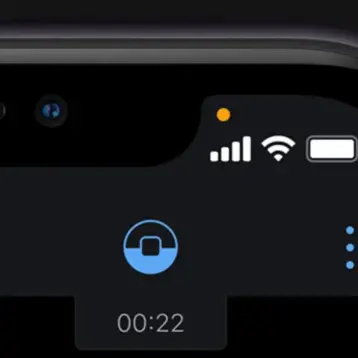At the Consumer Electronics Show (CES) 2009 held at Las Vegas in January, nVIDIA Corporation unveiled the first high-definition three dimensional (3D) stereo solution for the home called nVIDIA 3D Vision for GeForce. The system consists of high-tech wireless glasses, a high-power IR emitter and advanced software that automatically transforms hundreds of existing PC games into full stereoscopic 3D gaming experiences. This is in a bid to form a foundation for a new breed of consumer 3D stereo ecosystem for gaming and home entertainment PCs.
 |
nVIDIA’s 3D Vision for GeForce
glasses with a gamepad |
|
The focus of the launch was the high tech ‘3D Vision’ which are wireless active shutter glasses. Designed with optics and electronics to provide two times the resolution per eye and compared to the passive 3D glasses conventionally available, these glasses provide ultra-wide viewing angles. nVIDIA’s 3D glasses look similar to sunglasses and are lightweight.
The system not only works with video games, but the user can also use it for watching movies or viewing photography with LCDs with 120 Hz from manufactures such as Samsung and ViewSonic as well as Mitsubishi’s DLP HDTVs and the
DepthQ HD 3D Projector by Lightspeed Design. 3D Vision allows for
flicker-free 3D stereo imagery, which is ideal for 3D gaming, 3D movies, and 3D photography.
“For gamers, 3D Vision for GeForce represents a whole different way of experiencing the game, and for developers, it unlocks the potential of making the game literally pop off the screen,” said Ujesh Desai, vice president of GeForce desktop business at nVIDIA. “From games to movies to photography, 3D Vision delivers a truly immersive awesome 3D experience.”
The basic design for the glasses consists of
Liquid Crystal (LC) filters for lenses. The LC lenses have a 120 Hz refresh rate. The effective refresh rate is basically halved as each eye receives a refresh rate of 60Hz and are synchronised with the frame rate output from the game engine using an Infrared (IR) remote connected to the PC using a USB.
The 3D Vision system’s high powered IR emitter enables data to be transmitted to a maximum range of 20 feet. The nVIDIA software can also be used with over 300 games compatible with the 3D Vision system. Furthermore, the system includes 3D Vision Viewer that permits users to import stereoscopic pictures and movies from a variety of different capture sources and online web photo galleries and also allowing gamers to capture in-game 3D screenshots.
 |
| nVIDIA’s glasses charging |
|
“Along with gaming innovations in Microsoft Windows and DirectX, nVIDIA 3D Vision proves there’s never been a better time to be a PC gamer,” said Corey Rosemond, group marketing manager, Windows Gaming. “By including support for previously released and upcoming Games for Windows and Games for Windows – LIVE titles, PC gamers can expect a new level of immersion in full stereoscopic 3D, and enjoy broad support for the hottest games.”
3D Vision for GeForce is available starting from leading U.S. e-tailers, as well as direct from nVIDIA for a suggested MSRP of $199 USD. Worldwide availability will be announced later, in the first quarter.
TFOT had a chance to try nVIDIA’s 3D Vision in CES during our tour of the company’s booth. Although it’s practically impossible to convey 3D gaming experience using conventional pictures or even videos, and despite the fact we had a very short time with the system during CES, we can say that from what we did have a chance to experience adding another dimension is an interesting experience. The biggest advantage nVIDIA has is with this product is the support for existing games and of course its ability to directly connect to the GPU and drivers which currently take a large part of the gaming market. The drawback is the need for a 120 Hz LCD which are still fairly rare. However at least judging from the reaction of other manufacturers, nVIDIA’s 3D Vision might be the first truly successful consumer 3D technology.
 |
| 3D porn – will it drive the 3D industry? |
|
One of the first companies to use nVIDIA’s new technology outside the gaming industry is the Carrollton Texas based Glacier Media Systems which developed a 3D video system based on nVIDIA’s Vision technology and Mitsubishi DLP HDTV. Together with an adult content company called Pure Play Media which already filmed several 3D adult movies they created an interactive 3D adult video where the viewer can change the viewing angle in real time. Despite its reputation the adult industry helped push many advanced technologies in the past and its interest in 3D technology could eventually help expedite its introduction into the consumer market.
TFOT has previously written about the
Minoru 3D Webcam which captures still photos and live videos in 3D – which later could be sent over the internet to family and friends.You can also check out our article about
Fujifilm 3D Digital Photo Frames which consists of three dimensional (3D) digital cameras, 3D digital photo frames, and 3D printing and
MIT’s 6-D Display researchers at MIT have recently created ‘6D’ images which are extraordinarily realistic, with a full three-dimensional look, but are able to also respond to their environment.
Additional information on the 3D Vision for GeForce can be obtained at NVIDIA’s
website.












